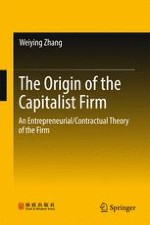2018 | OriginalPaper | Buchkapitel
3. Marketing Ability, Personal Wealth, and Capital-Hiring-Labour
verfasst von : Weiying Zhang
Erschienen in: The Origin of the Capitalist Firm
Verlag: Springer Singapore
Aktivieren Sie unsere intelligente Suche, um passende Fachinhalte oder Patente zu finden.
Wählen Sie Textabschnitte aus um mit Künstlicher Intelligenz passenden Patente zu finden. powered by
Markieren Sie Textabschnitte, um KI-gestützt weitere passende Inhalte zu finden. powered by
